Cobble-eating machines from the Leeuw van Vlaanderen
When professionals retire - particularly the very successful - it's not uncommon for them to open...





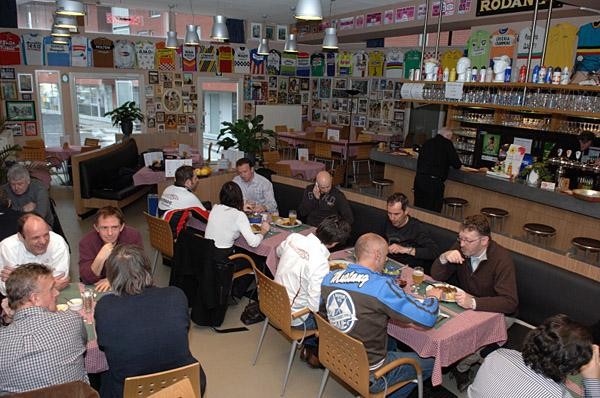
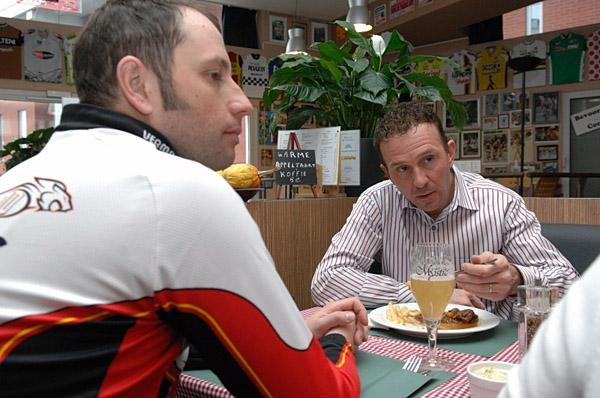




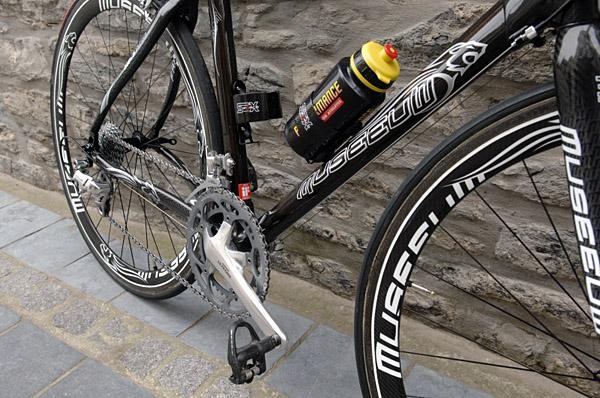


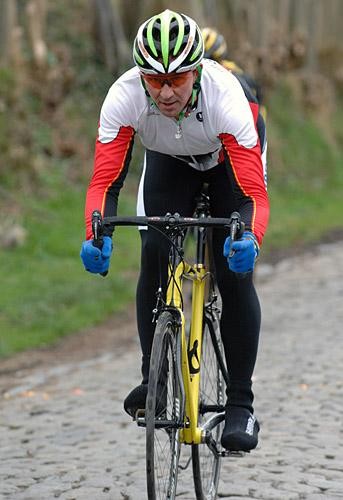





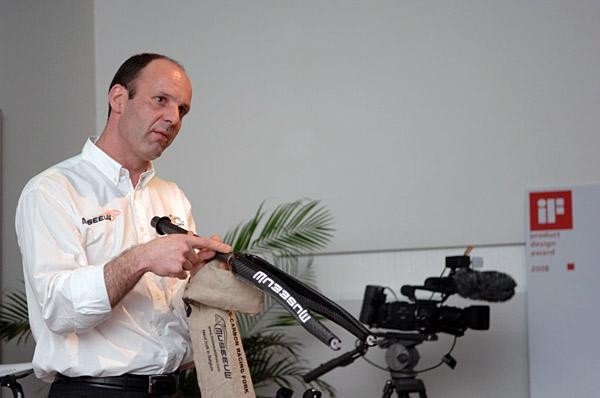


Tech Feature: 2008 Museeuw bike launch, March 18, 2008
The Centrum Ronde Van Vlaanderen in the scenic town of Oudenaarde, West Flanders was an appropriate setting for a media presentation of the range of bikes from Flemish legend Johan Museeuw. Ben Atkins was there to see what makes them so special.
When professionals retire - particularly the very successful - it's not uncommon for them to open their own factory and produce a range of bikes. For a legend like Johan Museeuw, any frame to bear his name would have to be something a bit out of the ordinary. In actual fact, the frames that the Leeuw van Vlaanderen has produced are refreshingly unique and herald the use of a material never before seen in bicycle production.
Flax/carbon offers a revolutionary material
The three frames in the Museeuw range are made from a flax/carbon hybrid material. Yes, you heard correctly, we said flax, the natural fibre that is used to make linen, ropes and other textile products. The Belgians are no strangers to the use of flax fibres, but their country's production is historically geared towards the traditional linen and lace making industries. Now however, they're blending the plants' fibres with carbon to produce frame tubes that - so go the claims - display characteristics like no other material.
Carbon fibre tubes are already highly tunable in their ride characteristics by altering the lay-up, number of plies, fibre content and tube shapes. The beauty of flax, claims Museeuw, is that the material's fibres themselves are what absorb the vibration. This allows for the production of frames that are built purely for stiffness with no need to specifically build in vertical compliance as in other frames.
The tubes themselves are formed by IPA Composites of Belgium and then shipped to Italy for assembly by renowned framebuilders Billato - who have been producing frames for themselves and under other brands names since 1954 - using a unique flax/carbon wrapping system. The completed frames are then returned to the Museeuw factory in Belgium for the final paint scheme to be applied.
The latest race content, interviews, features, reviews and expert buying guides, direct to your inbox!
Billato produces three road frames for the Museeuw range: the top-of-the-line MF1 elite racing frame uses a 50/50 carbon/flax mix of fibres in the main tubes while the MF3, the team bike of the Museeuw-sponsored Swift Racing women's squad, uses a firmer-riding 65/35 carbon/flax blend.
The MF3 is also available in cyclo-cross and track versions - the Pista with less (20%) flax for more stiffness, the Cross with slightly more (40-50%). The newest MF5 contains an incredible 80% flax fibre. All frames are equipped with an MF9 fork which is made from a similar 50/50 mix to the MF1 frame.
Riding Vlaanderen with the Leeuw
We took in some of the most famous roads from the Ronde for our test rides - in the company of one of its most legendary champions. In addition to Museeuw himself, we were also joined - or guided in fact as she is based locally - by recent Swift Racing signing Emma Davies. It was on Davies' local roads around Oudenaarde that we were to put the flax/carbon frames through their paces.
MF1 - built for de Kasseien
For the morning ride, we first set out on a Shimano Ultegra-equipped MF1. On the flat asphalt roads and long gentle drags that made up the early kilometres on the way out of Oudenaarde - in the direction of the business end of Flanders - the frame proved to be exceptionally stiff as promised. Trying to keep our heads clear of the company's expected eulogising over the frame's qualities, we couldn't help wondering how a frame that was this stiff would fare when we reached the kasseien (cobbles) that are such a feature of this region - and the Leeuw himself was so famous for conquering.
The first of the kasseien that we were to tackle was to be the Molenberg - one of the early climbs to be tackled in the Ronde itself (it's often the first one, but this year it will be number three). The speed in which we tackled the maximum 14.2 percent cobbled gradient made it difficult to judge the vibration damping, but it did allow us to notice once again how stiff the frame is - neither end showed much sign of flex.
It also gave us a huge lesson in humility: as we were climbing the berg - being dropped by most but still doing well by our own modest standards - a sudden blur to our left heralded the flying figure of Museeuw himself, having hung back at the bottom, riding as though we were on a flat section of cobbles rather than one of the steepest in the area. If nothing else, it brought home the fact that Johan Museeuw was born to ride these roads.
Not long after we crested the Molenberg, Davies led us to one of the long flat stretches of cobbles that punctuate most of the races in the area. To our surprise, it seemed that what the marketing materials had told us was actually true: we'd ridden these roads on a great deal of different bikes, in materials ranging from super-stiff and unforgiving 7000-series aluminium to virtual soft tail frames, but this was something different entirely. At no point was there the sensation that the frame was flexing at all, in any direction, but the sting of these legendary Flemish stones was definitely being softened by something within the frame's tubes.
This comfort sensation was further experienced later on when Davies' route extraordinarily led us to the village of Kwaremont, and down (yes, down!) the famous Oude Kwaremont climb. The vibration eating frame and fork once again conspired to keep the bike steady and take the worst out of the hits and bumps. A few kilometres further on from the Oude Kwaremont, we took that famous right turn and were presented with the awesomely frightening sight of the Koppenberg stretching before us. This famous old climb is now back in the Ronde after a one year hiatus - and after originally being left out due to worries about its surface - and we've had a love/hate relationship with it over the past few years. Once again though, the stiffness and damping combination of the MF1 came to our aid and we managed a personal best on the precipitous cobbled surface - in a 39x23T!
MF5 - comfort further defined
After a hearty Flemish lunch in the Centrum's Brasserie de Flandrien, while everyone else was being treated to a visit to the museum and shop, we snuck off alone to try out the new 80 percent flax MF5 frame. The higher concentration of flax fibres in the MF5's main tubes are designed to be even more compliant without making too many compromises on the frame's stiffness.
Despite not feeling like quite as much of a pure racing frame as the MF1, the MF5 still proved to be appropriately rigid as we pounded along Oudenaarde's concrete cycle paths in search of something a bit more challenging. On the way out of town is a hill, the Katteberg - not often climbed in races, in fact the Ronde usually descends it straight after the Wolvenberg - which is surfaced with small cobblestones, about three inches square. These stones are by no means as bumpy as the sort that we'd been riding this morning, but the frame almost managed to make it feel like the road was asphalted. Repeated climbing and descending of the Katteberg on the MF5 allowed us to explore its stiffness on the way up and its compliance on the way down. Without a doubt this was one of the most forgiving rides we'd had in quite a while.
Belgian quality all around
In addition to the Museeuw bikes, the event was also supported by the other members of "Belgian Quality Brands". Energy products for the rides were supplied by Performance - manufacturers of a variety of sports nutrition products. Our Museeuw jerseys were made by Vermarc Sports - who are also the suppliers to a number of elite cycling teams: not least Silence-Lotto and Quick Step. The bikes were cleaned and maintained using products from Morgan Blue - also suppliers to a number of ProTour teams. Last but by no means least, the event was hosted by the Centrum Ronde Van Vlaanderen (the Tour of Flanders Centre) in Oudenaarde - look out for a full feature on this very soon on Cyclingnews as we ramp up our classics coverage.
We're very much hoping to acquire a Museeuw frame for a full long term test in the near future; watch this space for more developments.
